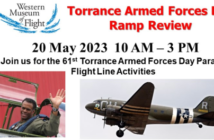This story begins when I was about 11 years old and my Dad, a career Air Force Pilot, was stationed, he often used the term “exiled” – in a backwater – at least in those days – called St. John’s, Newfoundland. In both World Wars, it rose to prominence as a jumping off port for convoys headed to England and as a base for their escorts and land base patrol airplanes. And, in any major war against Russia, it would again become strategically important to NATO to maintain the sea bridge to Europe.
In 1949, Labrador and the island of Newfoundland were combined to become the easternmost province of Canada. Before then, Newfoundland was a British colony.
When we lived there in the mid 50s, the world was passing St. John’s by. At the time, St. John’s was the province’s largest city and became its capital. Fishing in the Eastern Atlantic and in an area what is known as Grand Banks was its primary industry. Today, with large deposits of oil and natural gas under the Grand Banks, it is now a hub for oil and gas exploration and production.
In 1901, on what is now known as Signal Hill, Gugliermo Marconi set up the first radio station to transmit and receive radio signals to and from the U.K. In June 1919, John Alcock and Arthur Brown took off from a field near where the current airport in St. John’s is located and made the first non-stop flight across the Atlantic in a modified World War I bomber called a Vickers Vimy.
When Charles Lindbergh made his solo crossing, he flew past Marconi Tower on the top of Signal Hill. It was his last sighting of land until he crossed the Irish coast and the act was immortalized in the move Lindbergh starring Jimmy Stewart.
When we lived in St. John’s, the Air Force had two bases on Newfoundland and one at Goose Bay, Labrador. The one on the eastern end of the island was called Torbay – now St. John’s International Airport. The other base –Harmon AFB in Stephenville at the southwestern end of the island. On one of the bays on the southern part of the island there was a Naval Air Station near a town called Argentia. This is where Churchill and Roosevelt met in August 1941 and created a document known as the Atlantic Charter which is considered the founding document of what, after World War II, became the United Nations.
As an aside, the island of Newfoundland is full of small towns with great names such as Come By Chance, Joe Bat’s Arm, Heart’s Content and Leading Tickles. Gander Lake sits in the northern third of the island and the long narrow lake was used as a fuel stop by seaplanes transiting the North Atlantic. Later, it was a jumping off spot for airliners going to and from Europe.
So much for history… One of my many memories of living in St. John’s happened one evening. Earlier that day, my Dad took off in a C-47 on a flight to “flight check” the airfield, the instrument landing systems and ground controlled approaches (GCAs) at Harmon, Torbay and Argentia. The Air Force had (or maybe still has) specially equipped airplanes that could evaluate the quality/accuracy of the enroute electronic navigational aids as well as radars. After they were “flight checked,” they were certified for instrument approaches.
As usual, my mother dropped my Dad off at the base well before the flight. We returned in time to see the twin-engine C-47 taxi up in front of base operations and shut down. My mother and I walked onto the ramp and I ran to greet my Dad. He came out of the cabin door with a long screwdriver in his hand, and a grim angry expression on his face. He didn’t acknowledge me and walked past as if I didn’t exist.
Dad climbed on to the C-47’s large main landing gear tire and jabbed the leading edge of the wing several times. A huge block of ice fell down and it had a large crescent that was the shape of the leading edge of the wing. Like a man on a mission, Dad marched past my mother and me, again without saying hello and headed into base operations.
I followed and watched him thump the block of ice on the weather forecaster’s desk. He banged down the screwdriver and glared at the weatherman who had given him a weather brief before the flight…. “Whatdayya mean no f%#&g ice?” Dad stormed out leaving a grim forecaster with a block of ice that probably weighed about ten pounds melting on his counter.
Years later, when I started flying, I asked him about that night. He said what made him so mad was that the forecaster had told him during their weather brief, that there was virtually no chance of airframe icing that night. On the way back after spending over five hours in the air battling rime and clear ice, heavy enough at times that the C-47 could barely maintain altitude at full military power. He thought the chunk of ice was proof that the forecaster was wrong!
That was my introduction to the dangers of ice forming on the wings and fuselage of an airplane. Little did I know later, I would be saying those same words!




